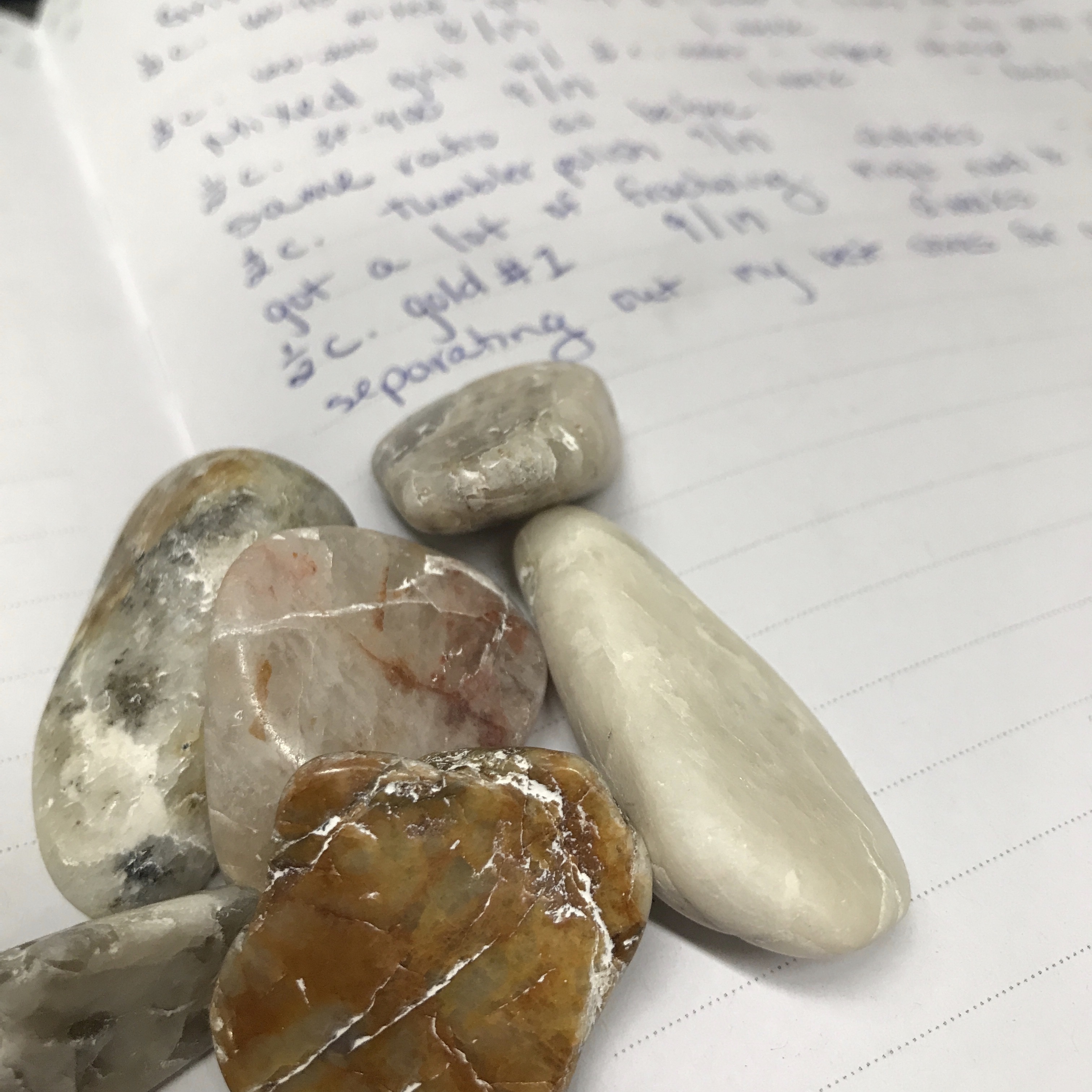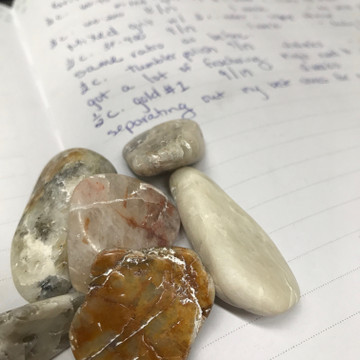“rock” It Science
a lapidary and glass blog for the casual (and not so casual) artist
10.24.17
The Art and Science of Tumbling Rocks
Lapidary is Both an “Art” and a “Science”

I can make recommendations based on my experience but nothing beats your own hands on experience for making progress in the lapidary field.
I am happy to share my data and measurements with you all, but please understand…
In the words of the infamous Captain Jack… they’re more like “guidelines.”
When you begin your lapidary or glass journey, know that there will be a learning curve. Often times it can be an expensive learning curve which is why I always recommend the least expensive options first! I like to be frugal with my money so I experiment with different processes and keep a detailed record of the results.
If I am unhappy with the results I try a slightly different process next time.
If my results are superb, I have a guide for replicating those results.
I would love to tell you all how many cuts a blade will make…
or how long a disc will grind…
or how much material a belt will remove before it needs to be replaced…
but there is so much variation in people’s processes and material that it’s absolutely impossible to give any kind of reliable answer.
PRO TIP: Mark your supplies with a date so you know how long they lasted you.
Keeping track of your process is part of the “art” of the field. Once you have experimented with the different supplies and gotten the results you want, you can usually replicate them with your “scientific” data.

